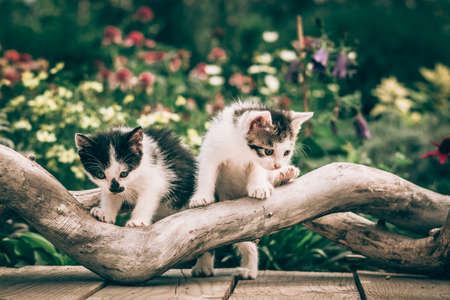1. Understanding the British Countryside: Setting the Scene for Outdoor Cats
The British countryside is a tapestry of rolling hills, patchwork fields, ancient woodlands, and quaint villages. This rural landscape is not only picturesque but also home to a diverse array of wildlife and traditional farming practices that shape daily life. Outdoor cats in this environment encounter unique opportunities and challenges that differ significantly from urban or suburban settings.
Key Features of the British Countryside
| Feature | Description | Impact on Outdoor Cats |
|---|---|---|
| Wildlife | Includes birds, small mammals, foxes, badgers, and hedgehogs. | Provides hunting opportunities but also potential dangers from predators. |
| Farming Activities | A mix of arable and livestock farming, with open fields, barns, and machinery. | Cats may find shelter in barns or outbuildings but face risks from machinery and chemicals. |
| Rural Community Culture | Tight-knit communities with a strong sense of land stewardship and animal welfare. | Neighbours may help look out for roaming pets; expectations around responsible ownership are high. |
| Lack of Traffic | Less road traffic than towns or cities, but country lanes can be dangerous due to fast-moving vehicles. | Lower risk of road accidents overall, yet some roads pose significant hazards. |
How These Factors Influence Outdoor Cat Life
In the countryside, outdoor cats benefit from abundant space to roam and natural prey to hunt. However, they must navigate the presence of native wildlife—some of which are protected species—and avoid hazards such as farm equipment or pesticides. The strong sense of community often means locals will notice and report stray or injured animals, contributing to their safety but also raising expectations for responsible pet ownership. Understanding this unique setting is essential for anyone considering letting their cat explore the great outdoors in Britain.
2. Risks Faced by Outdoor Cats in Rural Britain
The idyllic British countryside offers a picturesque setting for outdoor cats, but it is not without its hazards. Understanding the specific risks faced by felines in rural areas is crucial for any responsible cat owner. Here’s an overview of the most common dangers your cat might encounter:
Common Dangers in the British Countryside
| Risk Category | Description | Examples Specific to UK Countryside |
|---|---|---|
| Predators | Cats may be targeted by local wildlife. | Foxes, birds of prey (such as buzzards or owls), badgers |
| Road Traffic | Country lanes can be deceptively fast and dangerous. | Narrow rural roads with limited visibility, farm vehicles, speeding motorists |
| Agricultural Hazards | Farms and fields introduce unique threats. | Pesticides, fertilisers, machinery, livestock (such as cows or horses) |
| Poisonous Plants & Chemicals | Several native plants and chemicals used in gardens and farms are toxic to cats. | Lilies, yew, antifreeze, slug pellets |
| Harsh Weather Conditions | The UK climate can be unpredictable and sometimes extreme. | Heavy rainfall, frost, snow, flooding, sudden temperature drops |
Predators: A Hidden Threat
While foxes and badgers may seem harmless or even endearing to humans, they can pose a real threat to young or small cats. Birds of prey are also known to attack kittens and smaller adult cats, especially in more remote areas.
Rural Roads: Not as Quiet as They Seem
Unlike urban streets, country roads often lack pavements and have poor lighting. Drivers may not expect animals on the road, increasing the risk of accidents—especially during dusk or dawn when cats are most active.
Agricultural and Environmental Hazards
Cats are curious by nature. Farms use various chemicals for crop protection and pest control that can be harmful if ingested or absorbed through their paws. Livestock can inadvertently injure a cat exploring a barn or field.
Toxic Plants and Substances Unique to Britain
The British countryside is home to several plants that are beautiful but dangerous to cats. Even common garden chemicals like antifreeze and slug pellets present significant risks if your cat roams freely.
Weather Extremes: Preparing for the Unpredictable
The UK’s weather can shift quickly from mild sunshine to torrential rain or freezing temperatures. Cats left outside for extended periods without shelter may suffer from exposure, hypothermia, or dehydration depending on the season.

3. The Benefits of Allowing Cats Outdoors
Allowing cats to roam outdoors in the British countryside offers a wealth of benefits for both feline companions and their human carers. The rural landscape is rich with sights, sounds, and scents that provide essential mental stimulation and physical exercise for cats. This natural environment encourages behaviours that are innate to cats, helping to keep them healthy and content.
Enrichment Through Exploration
Cats are natural explorers, and the varied terrain of fields, hedgerows, and gardens offers endless opportunities for discovery. Outdoor access allows cats to:
- Climb trees and fences, supporting agility and balance
- Stalk through grass, satisfying their hunting instincts
- Investigate new scents, which stimulates their keen sense of smell
- Interact with other animals (from a safe distance), promoting socialisation skills
Physical Health and Exercise
Outdoor life provides cats with the space they need to run, jump, and play. These activities contribute to maintaining a healthy weight, strengthening muscles, and reducing the risk of obesity-related illnesses. The table below highlights key differences between indoor-only and outdoor-access cats in terms of physical activity:
| Indoor-Only Cats | Outdoor-Access Cats | |
|---|---|---|
| Exercise Level | Often limited to toys and climbing furniture | Can run, climb trees, hunt, and roam freely |
| Mental Stimulation | Relies on owner-provided enrichment | Naturally enriched by changing outdoor environment |
| Natural Behaviours | May become bored or frustrated if under-stimulated | Able to express hunting, scent-marking, and exploring behaviours naturally |
The Traditional Role: Rural Pest Control
Cats have long held an esteemed place in British rural life as effective pest controllers. On farms and in country cottages alike, cats help keep populations of mice and rats in check. This not only protects stored crops and animal feed but also supports local biodiversity by reducing reliance on chemical pest control methods. Many landowners still value the presence of a resident cat or two as part of their integrated approach to managing rural properties.
The Mutual Benefit for Cats and Community
The relationship between country-dwelling cats and their communities is a two-way street. While cats enjoy the freedom to express their true nature outdoors, households benefit from their pest control skills and companionship. With responsible ownership—such as ensuring vaccinations are up-to-date and providing regular health checks—these benefits can be enjoyed while minimising potential risks.
4. British Legal Responsibilities and Local Guidelines
When considering letting your cat roam outdoors in the British countryside, it is crucial to understand the legal responsibilities, insurance considerations, and local community expectations that come with cat ownership. Unlike dogs, cats in the UK are classed as ‘free roaming’ animals, meaning there is no legal requirement to keep them contained to your property. However, owners are still responsible for ensuring their pet’s welfare and minimising any negative impact on neighbours or local wildlife.
UK Laws on Outdoor Cats
The Animal Welfare Act 2006 obliges all pet owners to meet their animals’ basic needs, including safety from harm and access to food and water. If a cat causes damage or nuisance—such as fouling gardens or preying on protected wildlife—owners may face complaints from neighbours or local authorities. While cats are unlikely to be prosecuted for trespass, repeated issues can strain community relations.
Insurance Considerations
| Type of Insurance | Coverage Details |
|---|---|
| Pet Insurance | Covers injuries from road accidents, fights with other animals, and some illnesses linked to outdoor exposure. |
| Third-Party Liability | Some policies offer limited cover if your cat causes damage or injury to others, but this is less common than with dogs. |
It’s advisable to check policy details carefully; most insurers expect outdoor cats to be microchipped and up-to-date on vaccinations.
Local Community Expectations
- Respect for Wildlife: Many rural areas have guidelines about protecting native birds and small mammals. Some communities encourage fitting cats with quick-release collars and bells to reduce hunting.
- Neighbour Relations: It is good practice to talk with neighbours if your cat regularly visits their property. Open communication helps prevent disputes.
- Identification: Microchipping is strongly recommended—and required by law in England from June 2024—to help reunite lost cats with their owners.
Summary Table: Key Responsibilities
| Responsibility | Legal Requirement? |
|---|---|
| Microchipping | Yes (from June 2024) |
| Vaccinations & Health Checks | No, but highly recommended |
| Outdoor Access Control | No legal limit, but owner liable for welfare under Animal Welfare Act |
Takeaway
If you choose to let your cat explore the British countryside, stay informed about your legal obligations and community standards. Responsible ownership ensures not only your cat’s wellbeing but also maintains harmony with neighbours and protects the unique rural environment.
5. Minimising Risks: Practical Steps for Responsible Owners
Owning an outdoor cat in the British countryside comes with unique responsibilities. To ensure your feline friend enjoys the freedom of the outdoors while staying safe, it’s crucial to take proactive measures. Here are some practical steps every responsible cat owner should follow:
Microchipping and Identification
Microchipping is a legal requirement in England as of June 2024 and one of the most effective ways to reunite with your cat if they wander too far. Make sure your contact details are always up to date with the microchip registry. Additionally, fit your cat with a breakaway collar featuring a visible ID tag.
Reflective Collars for Night-time Safety
The British countryside can be dimly lit, increasing the risk of accidents during dusk or at night. A reflective collar helps drivers spot your cat more easily, reducing the chances of road incidents.
Vaccinations and Preventative Health Care
Outdoor cats are exposed to more diseases than their indoor counterparts. Keep vaccinations current and schedule regular vet check-ups to protect against common threats such as feline leukaemia, rabies, and parasites.
Key Preventative Measures
| Action | Purpose | Frequency/Advice |
|---|---|---|
| Microchipping | Permanent identification | Once; update when details change |
| Reflective Collar & ID Tag | Visibility & quick identification | Check fit and condition monthly |
| Vaccinations | Disease prevention | Annually or as advised by vet |
| Parasite Control (fleas, ticks, worms) | Avoid illness from rural wildlife exposure | Monthly treatments recommended |
| Neutering/Spaying | Population control & reduced roaming | Once; typically before first heat or at 4-6 months old |
Neutering: Community and Wildlife Consideration
The RSPCA strongly encourages neutering cats before they’re allowed outdoors. Not only does this help prevent unwanted litters—especially important in rural areas where feral populations can grow rapidly—but it also reduces roaming behaviour and aggression.
Cultivating Good Neighbour Relations & Protecting Wildlife
The British countryside is home to diverse wildlife, from birds to small mammals. To minimise predation:
- Bells on Collars: Attach a bell to alert prey animals.
- Curfew Times: Keep your cat indoors during dawn and dusk when wildlife is most active.
- Litter Training: Provide a litter tray indoors to discourage cats from using neighbours’ gardens as toilets.
- Liaise with Neighbours: Discuss boundaries and share information about local hazards like pesticides or busy roads.
Taking these simple but effective steps will help you balance your cat’s independence with their safety—and ensure you remain a considerate member of your rural community.
6. Working with the Local Community and Wildlife
Building a harmonious relationship between outdoor cats, neighbours, and wildlife is essential in the British countryside. Open communication with your neighbours helps prevent misunderstandings about roaming cats, shared gardens, or possible disturbances. By discussing your cat’s habits and agreeing on boundaries, you can foster goodwill and minimise conflict.
Respecting Local Wildlife
The UK countryside is home to a rich variety of wildlife, from songbirds to hedgehogs. Cat owners must take responsibility for reducing their pets’ impact on these native species. Consider using collar bells or keeping cats indoors during dawn and dusk when wildlife is most active. The table below suggests practical steps:
| Action | Benefit |
|---|---|
| Fit a bell on cats collar | Warns birds and small animals of approaching cat |
| Limit outdoor hours | Protects nocturnal and crepuscular wildlife |
| Provide enrichment at home | Reduces hunting instinct outdoors |
Neighbourly Communication
Polite conversation goes a long way in rural communities. If your neighbour has concerns about your cat, listen respectfully and work together on solutions—such as shared feeding stations or designated roaming areas. This approach not only preserves community spirit but also ensures all residents—human and animal—feel respected.
Participating in Community Initiatives
Many villages run local campaigns to protect wildlife or manage free-roaming cats. Join forces with neighbours for projects like hedgehog highways, bird-friendly gardens, or local TNR (Trap-Neuter-Return) schemes. Participation demonstrates your commitment to the area’s unique ecosystem and strengthens community ties.
Together for a Balanced Countryside
A responsible outdoor cat owner in the British countryside works hand-in-hand with the community and respects the natural world. Through open dialogue, wildlife-aware practices, and active involvement in local initiatives, you can help create a peaceful environment where pets, people, and wildlife thrive side by side.


